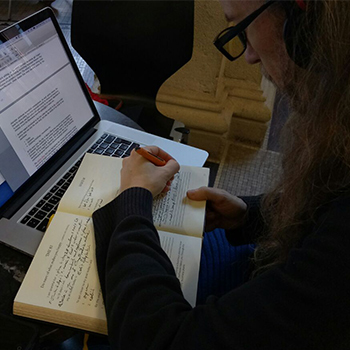Congratulations on learning how to journal for self improvement.
Seriously.
Not everyone takes up this powerful practice. But we all wish more people did because the rewards are incredible.
For example, by keeping a daily journal focused on your self improvement journey, you discover:
- Which goals really matter do you (while filtering out those that don’t)
- Where you time is going (so you think about and apply it mindfully)
- How many things you have to be grateful for
- How journaling helps you remember more
- Paths to reducing stress
- Solutions to problems
- Progress keeping so you can see a history of improvement on demand
- Clearing your head, a.k.a. “mind dumping”
With so many great benefits on tap, you might be wondering… how to start?
The answer is simple:
Start with a specific goal in mind and a journaling schedule.
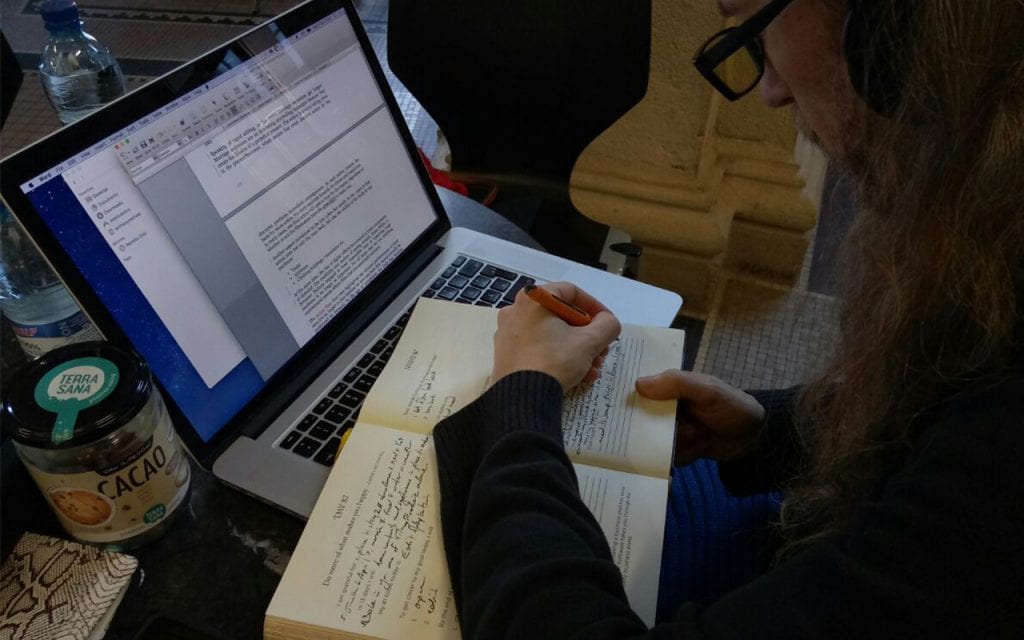
Setting A Time For Journaling And A Goal
I personally journal for each of the outcomes listed above. But like everyone who is successful with keeping a journal, I started small.
Though “small” might not be the best word because I was trying to solve a particular goal: Fixing my life. (That’s pretty ambitious.)
This was back in 2011 and I desperately needed something big to happen to get out of a rut. So after reading about the power of journaling, I started to write out my perfect day each and every day.
I was always on the Skytrain in Vancouver at approximately the same time of day, so I chose that regular commute for journaling.
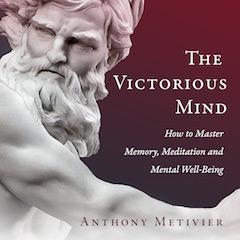
As I talk about in my book, The Victorious Mind: How to Master Memory, Meditation and Mental Well-Being, I actually did wind up improving my life a great deal after journaling for this goal.
And that’s because following the process helped me realize that I didn’t want the goal I originally had in mind at all. In fact, I’d been deceiving myself and trying to please my girlfriend instead of going after something I truly wanted for myself.
This is an important, if painful lesson to learn.
But the more you reflect on how you’re trying to please others, you realize that you’re actually failing them. How could the others in your life possible want you to be unhappy?
In reality, those who truly care about us want us to pursue our dreams. It is only by doing so that we see great things emerge from individual lives. (Though as we’ll see, they need to use their individuality in a particular way.)
Self Improvement Journal Template: Why There Is No Such Thing
Lots of websites and products you can buy will give you a template for journaling.
Sure, these things can sometimes help.
But because each life is so unique, you really have to develop your own style.
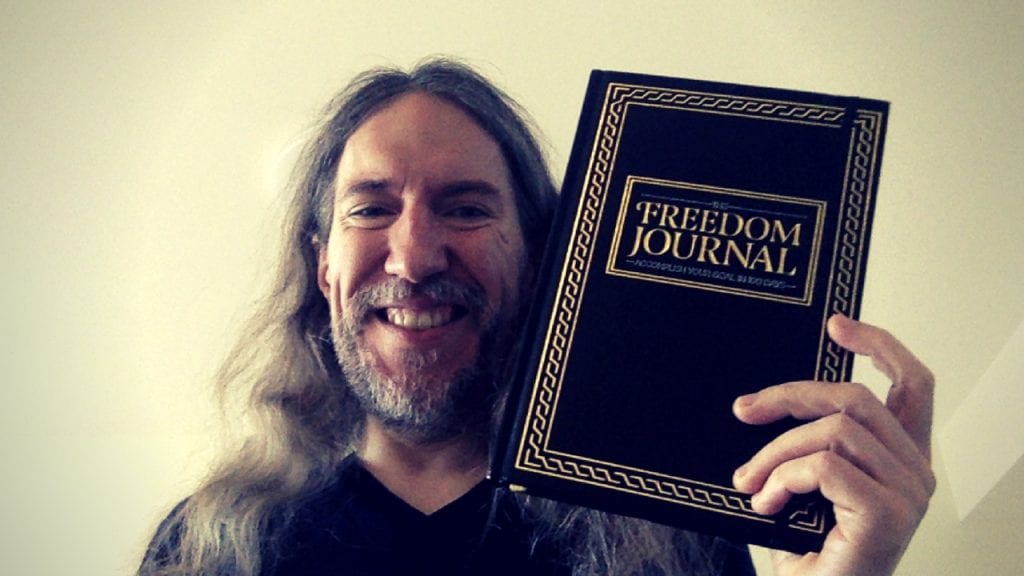
If you really need something to follow, one I’ve found valuable is called The Freedom Journal. It combines enough basic structure with flexibility that over 100 days you can build journaling into your life as a positive habit that lasts.
Beyond that, I’ve journaled in any old paper journal or directly into an iPhone. I prefer the paper because it also allows me to mind map freely if I want.
What To Write About In Your Journal: 7 Powerful Journaling Activities
So you’ve got a time and place set aside for journaling, but you still don’t know what you want to write about.
One: The Perfect Present Journal Exercise
If nothing else, start as I did with the “Perfect Present” exercise. Here’s an example of what I used to write every single day in my journal:
I am healthy and strong. I write every day and play music in harmony and bliss, supported by my writing.
That’s the statement I eventually arrived at after whittling Perfect Present exercise down to the core of what I really wanted. It was really only a short time after I started being honest with myself that I started living this ideal existence.
To take this exercise to the next level, consider adding at least one vision statement as you practice.
Two: Brain Dumping Your Way To Effective Planning
Once you have your Perfect Present worked out, you can use journaling to plan your day.
Typically, I will “brain dump” first, literally writing out anything and everything on my mind to clear it out. Sometimes I follow a simple model I heard Dan Sullivan talking about:
- Fears
- Opportunities
- Strengths
For example, if you want to make your living from writing, it’s helpful to write out all the fears you have around this goal (or the maintenance of the goal).
Then, to help “clean” out all the fears, you journal out the different opportunities you have.
Finally, you journal about the strengths you have that help you take advantage of the opportunities you listed.
Here’s an example:
I’m afraid my next book will alienate my audience because I’m tackling a topic I’ve never written about before. But my opportunity is to reach an entirely different audience, some of whom will like reading my other books. My strength is writing well enough to explain to my audience why I’m going off on what might seem like a tangent in my next book.
Once this “head trash” is out of the way thanks to the magic of journaling, you can go to the planning stage. This isn’t complex. You just chart out what needs to get done and when you’re going to do it during the day to come.
Three: Self Inquiry For Advanced Mindfulness
Self inquiry is a practice that helps reveal the nature of consciousness to the practitioner. I first learned about it in Gary Weber’s Happiness Beyond Thought.
Normally, you would perform self inquiry as part of meditation. As Dr. Weber teaches it, drawing upon ancient Sanskrit sources, you would ask questions like:
- How do my thoughts behave?
- Are my thoughts useful?
- Do my thoughts have value?
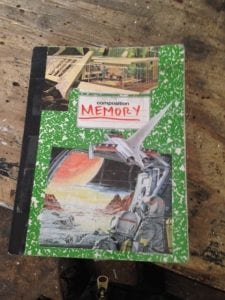 You can also ask questions about the state of your experience:
You can also ask questions about the state of your experience:
- What is my energy right now and how does it feel?
- How do I define my experience of this moment?
- Who is it that is perceiving this moment?
Questions like these are admittedly a bit “Zen,” but they’re powerful because they encourage you to pause for a moment and really look at the nature of your experience.
For exercises that are a little less intense, check out these more mainstream self help journal prompts.
Four: Daily Reports
I love to use a special kind of journal to keep my daily log. It’s called a 5 Year Snap Journal.
These are great because you can see exactly what you journaled one year ago. I’m currently completing my third year and it’s amazing to see the previous years at a glance.
But even more amazing is how using this kind of journaling changes your perception of time.
For example, I look at events that took place a year ago and almost every time it feels like it took place a decade or longer ago.

As shocking as this experience can feel, it’s very positive. You’re literally getting much more out of life when one year feels like ten. There’s even research on this effect which you can read about in Richard Wiseman’s 59 Seconds.
What events should you log? It’s really up to you, but I generally write out:
- Visits with friends
- Books I’ve finished reading
- Movies I’ve seen
- Pieces I’ve finished writing
- Videos I’ve launched
Five: Gratitude
Want an instant dose of happiness?
List all the great things you get to experience.
Sure, you can still be going through tough times. We all do.
And during those tough times, it’s still worth noticing the simple things in life, such as:
- Running water
- Food
- Electricity
- Roof over your head
I always shoot for at least ten items. Even though it’s repetitive, that’s not a problem. The journaling exercise itself redirects my attention to what matters: the good things in life that I should be grateful for. Many people aren’t so lucky or blessed.
Six: Problem Solving
This form of journaling is pretty straight forward. The first trick is to make sure you write out the problem clearly. The second trick is to make sure you describe a real problem that needs solving (often we choose things that don’t need solving). Finally, the third trick is to describe a problem that can be solved.
You can use a question and answer format if you find that helpful. Describe the problem and then ask questions like:
- Am I the right person to solve this problem?
- Who might be able to help solve it?
- Why does this problem need to be solved right now?
- What happens if it isn’t solved?
Another model you can follow is the W.R.A.P. formula from Dan and Chip Heath in their book, Decisive.
- Widen your options
- Reality test
- Attain distance
- Prepare to fail
I teach this technique often in my memory work, and developed a simple way to help you memorize it using ars combinatoria (the art of combination). It’s just one of many mental strength strategies you can use to improve your life.
Seven: Giving Back
To be at our best, we can’t just show our gratitude and then plan to solve problems so we can get more to be grateful about.
There are many ways you can give back and journaling can help you figure it out, especially when you combine all of the above.
List as many simple things as you can, and give them a date on the calendar. These activities might include:
- Donating books and DVDs you don’t need anymore
- Researching events like marathons for good causes you can participate in
- Setting up giving campaigns on Facebook instead of receiving gifts for your birthday
- Take someone out for coffee or dinner
Plan to engage in at least one of these activities per month.
If you’re skeptical that doing good deeds will improve your life, check out the science reported in The Compassionate Instinct. Although we shouldn’t need a selfish reason to use journaling to plan our good deeds, science shows firmly that doing so benefits our brain chemistry just as much – if not more – than it does others.
How To Journal For Success
Now that you know how to journal for self improvement, the final secret ingredient is pretty much common sense:
Be consistent.
Nothing great will happen if you only journal once in a while.
As I shared above, my real desired goals only started showing up after I spent a fair bit of time journaling about what my girlfriend (at the time) wanted. Only the pain of consistently witnessing the lie come out of my pen woke me up to the bad behavior and prompted change.
Just about everyone will go through a “dark night of the soul” like this. And an efficient way to break through without having to rack up bills with a therapist is to experience it in writing for yourself.
So what do you say?
The quality of your life and others is at stake. Are you ready to get started journaling for total life improvement?
Let me know in the comments and I can’t wait to hear about your success!
And if you enjoyed this post, please consider going through my Daily Discipline Masterplan guide and video course. It’s free:

